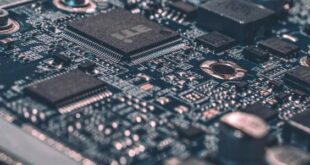Quantum computers are the dream of modern physics as they could solve problems that are too difficult for today’s most powerful supercomputers. but creating them requires learning how to manage the elusive quantum particles. which are smaller than atoms.
Scientists from the University of Bristol and the Technical University of Denmark have created chip-scale devices that are able to utilize quantum physics to manipulate single particles of light. The team’s findings have been published in the journal Nature Physics. RT reported.
In one of the experiments with the chips. described as a breakthrough. the researchers were able to demonstrate the quantum teleportation of information between two programmable devices for the very first time using a physical process known as quantum entanglement.
This is a phenomenon in which two or more particles have a similar state. and a change in one means a change in another and the distance between the two is irrelevant.
We were able to demonstrate a high-quality entanglement link across two chips in the lab. where photons on either chip share a single quantum state. research co-author Dan Llewellyn said.
The flagship demonstration was a two-chip teleportation experiment. whereby the individual quantum state of a particle is transmitted across the two chips after a quantum measurement is performed. This measurement utilizes the strange behavior of quantum physics. which simultaneously collapses the entanglement link and transfers the particle state to another particle already on the receiver chip.
The scientists were also able to create a more complex circuit of four sources – and all of them turned out to be nearly identical thanks to the aforementioned entanglement. All in all. the team had a 91 percent success rate in getting the particles teleported – which is a very solid result. according to the researchers.
The ability to create and maintain reliable quantum circuits is the key to creating more complex devices. and. ultimately. quantum communication systems and networks able to interact with conventional electronics.
 Iran Energy News Oil, Gas, Petrochemical and Energy Field Specialized Channel
Iran Energy News Oil, Gas, Petrochemical and Energy Field Specialized Channel




